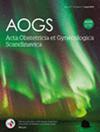Survey of practices in the European Federation for Colposcopy: HPV vaccination after treatment for cervical precancerous lesions
Abstract
Introduction
Patients treated for cervical precancerous lesions have a long-term increased risk for cervical cancer compared with the general population. As human papillomavirus (HPV) vaccination is effective in preventing cervical cancer and its precursors when given prior to sexual debut, adjuvant HPV vaccination in relation to the treatment of precursor lesions has been of great interest. Existing supporting data are of low quality, and recent meta-analyses called for high-quality randomized controlled trials. The European Federation for Colposcopy (EFC) observed a heterogeneity in clinical practices of adjuvant vaccination, and this survey aimed to assess potential differences in vaccination practices across Europe.
Material and Methods
A survey was sent out to 100 representatives of the 32 member countries of the EFC. The survey was in English and contained questions on current general HPV vaccination programs, whether guidelines on vaccination after treatment exist, and questions on respondents' own practices of recommending vaccination after treatment. The survey was constructed using the Google Forms web platform and sent by email to representatives of each National Colposcopy Society.
Results
In total, 44 answers from 32 different European countries were received. Overall, 12 countries (12/32, 37.5%) reported having a national guideline on HPV vaccination at the time of treatment for precursor lesions, and in nine of these countries, adjuvant HPV vaccination is recommended. A third, 31.8%, of respondents (14/44) found the available evidence sufficient to recommend vaccination at the time of treatment, and 54.5% (24/44) found the evidence to be nearly sufficient. Only 13.6% (6/44) of the respondents found the current evidence insufficient to be able to recommend vaccination. Altogether, 29.5% (13/44) of respondents would recommend vaccination, even if future randomized controlled trials would not show benefits.
Conclusions
The varying practices regarding adjuvant HPV vaccination across European countries are concerning and call for ethical evidence-based practices across Europe and reliance on high-quality evidence to assess whether vaccination at the time of treatment is effective.





 求助内容:
求助内容: 应助结果提醒方式:
应助结果提醒方式:


